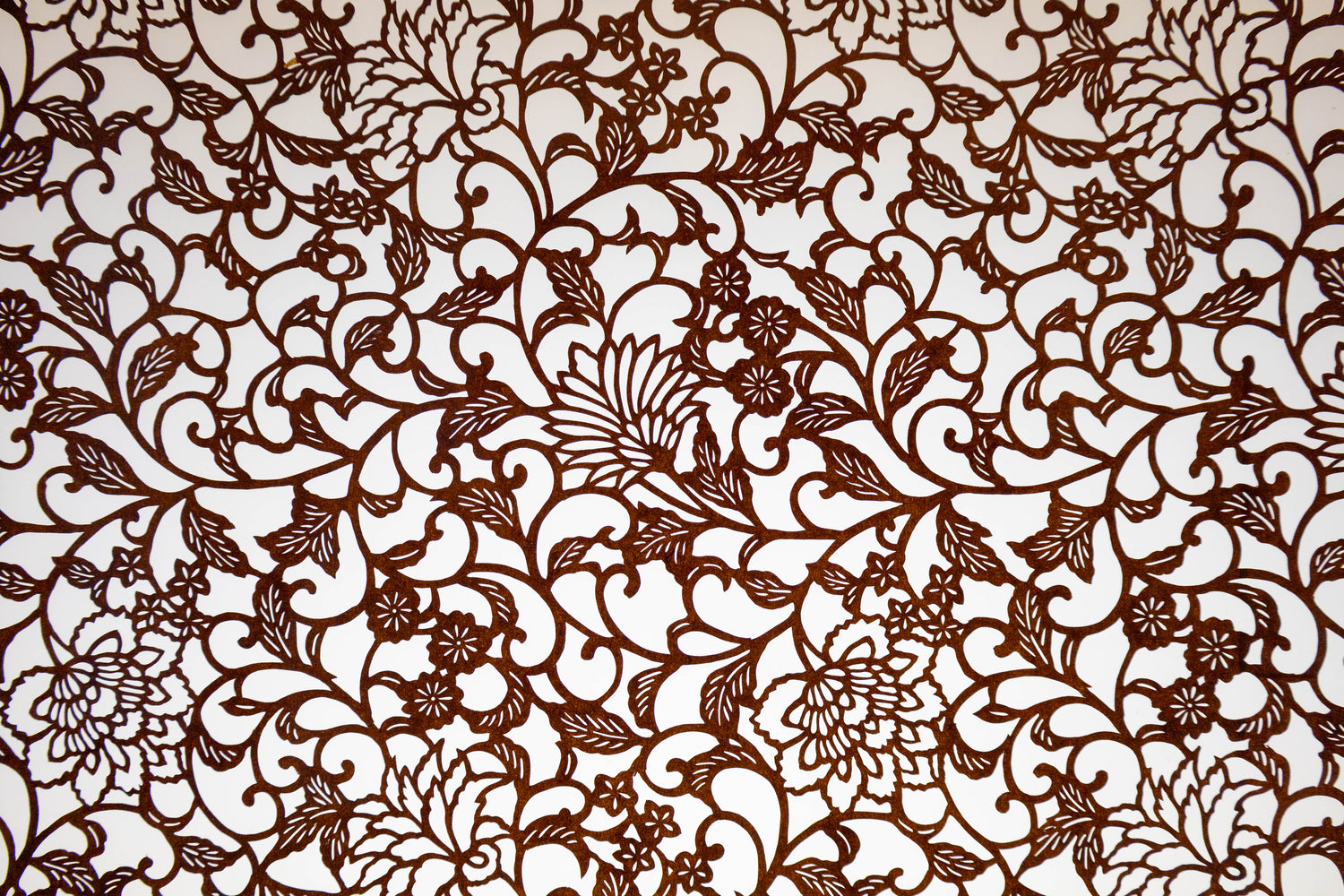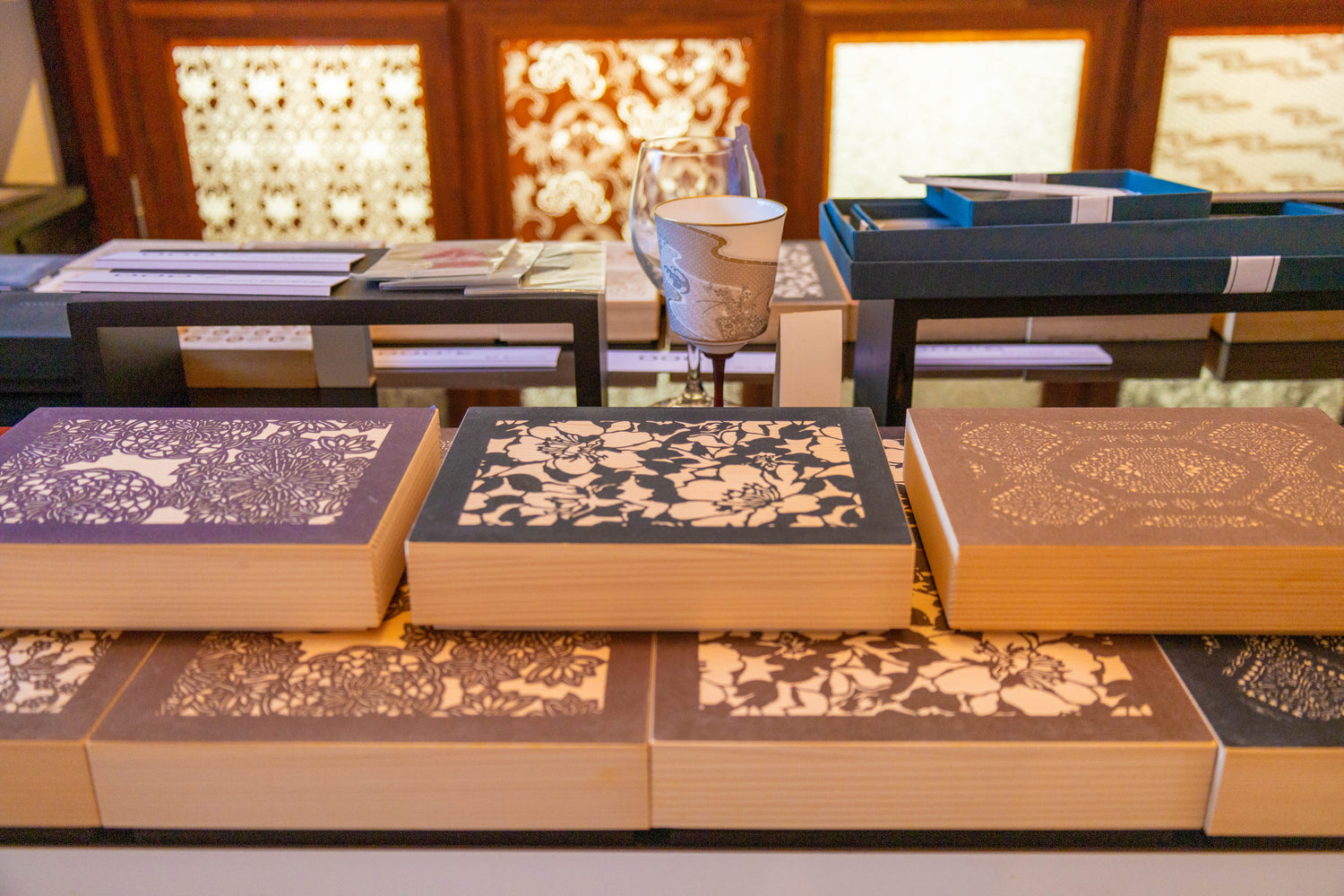株式会社オコシ型紙商店
Treasure Chest of KATAGAMI Patterns [Arabesque]
Treasure Chest of KATAGAMI Patterns [Arabesque]
Supplementary product information
Supplementary product information
Production area: Mie Prefecture
Dimensions:
・(Width) 90mm
・(Depth) 120mm
・(Height) 35mm
Materials:
・Main body: Natural paulownia wood
・Inner lining: Suede fabric
<Usage precautions>
・As natural paulownia wood is used, the appearance of the stamped patterns varies individually with differences in impression intensity, darkness, lightness, and unevenness.
・Paulownia wood is a soft material, so it is prone to scratches and dents, and as a natural wood, it will change color over time.
Couldn't load pickup availability
Please enjoy the design beauty that enhances daily life, whether used for organizing business cards on your desk, as an accessory box on your vanity, for card organization beside the telephone, or as a key box in your entryway.
【ARABESQUE】
The "arabesque pattern" is a motif that originated in ancient Greece, but this design of beautiful flowers that do not exist in this world connected by vines expresses the beauty of strong bonds between people and the sacredness of connection.
![Treasure Chest of KATAGAMI Patterns [Arabesque]](http://rashiku.store/cdn/shop/files/takarabako_arabesque_1.jpg?v=1689641676&width=1445)
![Treasure Chest of KATAGAMI Patterns [Arabesque]](http://rashiku.store/cdn/shop/files/takarabako_arabesque_2.jpg?v=1689641676&width=1445)
![Treasure Chest of KATAGAMI Patterns [Arabesque]](http://rashiku.store/cdn/shop/files/takarabako_arabesque_3.jpg?v=1689641676&width=1445)
![Treasure Chest of KATAGAMI Patterns [Arabesque]](http://rashiku.store/cdn/shop/files/takarabako_arabesque_4.jpg?v=1689641676&width=1445)

The History of Ise Katagami
While there are various theories about the origins of Ise katagami, it is said that during the Edo period, stencil dyeing came to be used for samurai garments called kamishimo, and as the komon patterns became increasingly intricate, the stencil papers developed accordingly. With the protection of the Kishu domain, stencil paper merchants organized trade associations and traveled throughout the country to sell their products, which led to the nationwide spread of Ise katagami.

Ise Katagami Techniques and Production Process
There are four types of traditional carving techniques: kiri-bori (awl carving), tsuki-bori (thrust carving), hiki-bori (pull carving), and dougu-bori (tool carving). Typically, each craftsman works as a specialist in their respective carving technique.
The production process involves creating a preliminary sketch of the design, carving the kompon-gata (master pattern), making a kompon-utsushi (pattern transfer), and then proceeding to carve the transferred design.

Examples of Ise Katagami usage
Ise-katagami refers to stencil paper with patterns carved out originally for the purpose of dyeing designs on kimono. Its aesthetic design and artistry have captivated not only overseas audiences but have also been widely incorporated into fashion, interior design, and various other products and projects.
Ise Katagami
Ise katagami originates from the Shiroko, Teraie, and Ejima districts of Suzuka City, Mie Prefecture.
Ise katagami is created by applying persimmon tannin to Mino washi (Japanese paper), layering the sheets alternately in vertical and horizontal directions to increase strength, and applying persimmon tannin once more to create the base paper. Using carving knives, patterns and designs for kimono are hand-carved into this base paper to create the stencils.




